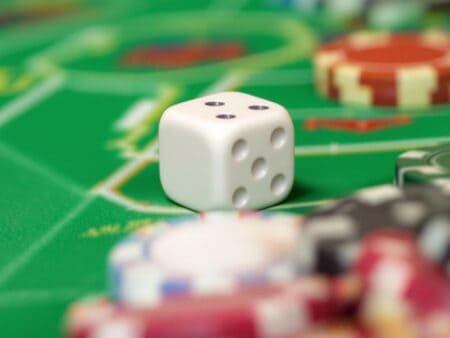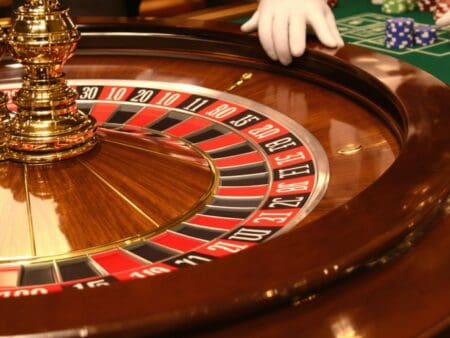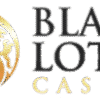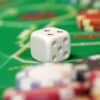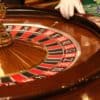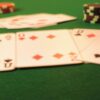Thinking about trying your hand at blackjack? It’s a fun game, and knowing a few things can really help you out. This guide is all about showing you how to play blackjack for beginners. We’ll break down the basics, talk about some simple strategies, and give you tips on managing your money so you can enjoy the game more. It’s not about getting rich quick, but about understanding the game and playing smarter.
Key Takeaways
- Understand the goal: Get as close to 21 as possible without going over, and beat the dealer’s hand.
- Know your cards: Number cards are face value, face cards are 10, and Aces are 1 or 11.
- Basic strategy is your friend: Learn when to hit (take another card) or stand (keep your current hand).
- Manage your money: Set a budget and stick to it; don’t bet more than you can lose.
- Practice makes progress: Play at lower stakes or for free to get comfortable before playing for real money.
Understanding The Fundamentals Of Blackjack
Welcome to the exciting world of blackjack! Before you can start winning, you need to get a handle on the basics. It’s not just about getting close to 21; there’s a bit more to it than that. You’re playing against the dealer, not other players, and the main goal is to beat their hand without busting. Sounds simple enough, right? Let’s break it down.
The Objective Of The Game
The whole point of blackjack is pretty straightforward: get a hand total closer to 21 than the dealer’s hand, but without going over 21. If you bust (go over 21), you automatically lose, no matter what the dealer has. If the dealer busts, and you haven’t busted, you win. It’s a constant dance between pushing your luck and playing it safe.
Card Values Explained
Understanding how much each card is worth is super important. Number cards are easy peasy – they’re worth their face value. So, a 7 is worth 7, a 2 is worth 2. Face cards, like Kings, Queens, and Jacks, are all worth 10 points. The tricky one is the Ace. An Ace can be either 1 or 11 points. You get to choose which value helps your hand the most. If you have an Ace and a 6, that’s a ‘soft 17’ – it can be 17, or if you hit and get a 9, the Ace becomes a 1, making your total 17 instead of 27 (which would bust you). This flexibility is key.
Here’s a quick rundown:
- 2-10: Face value
- Jack, Queen, King: 10 points
- Ace: 1 or 11 points
Dealer Versus Player
In blackjack, you’re in a one-on-one battle with the dealer. The other players at the table are just there; they don’t affect your game directly, though their actions might influence the shoe. The dealer has a set of rules they must follow, which are usually displayed on the table itself. Typically, the dealer must hit until their hand totals 17 or more. They don’t have any choices to make like you do; they just follow the script. This predictability is something you can use to your advantage. Knowing these dealer rules is half the battle.
Mastering Basic Strategy
Alright, so you know the goal of the game and how the cards shake out. Now, let’s talk about actually playing smart. This is where basic strategy comes in, and honestly, it’s your best friend at the blackjack table. It’s not about luck; it’s about making the mathematically best decision for every single hand you’re dealt. If you don’t use it, you’re basically just guessing, and that’s a fast way to lose your money. It can give you a serious edge at the table. Whether you’re playing at a casino or online, the right blackjack basic strategy can make all the difference. Let’s dive into how you can learn the tricks of the trade and dominate your next blackjack game.
When To Hit Or Stand
This is probably the most frequent decision you’ll make. Should you take another card, or is your current hand strong enough? Basic strategy provides clear answers based on your hand total and what the dealer is showing. For instance, if you have a hard 16 (no Ace involved) and the dealer shows a 7, you should hit. Why? Because the chances of busting (going over 21) are lower than the dealer getting a better hand than you. Conversely, if you have a hard 17 or higher, you should always stand, no matter what the dealer has. It’s all about probabilities, really. You want to avoid busting while trying to get the dealer to bust.
Here’s a simplified look at hitting or standing:
- Hard Totals 11 or less: Always hit. You can’t bust with one more card.
- Hard Totals 12-16: Hit if the dealer shows a 7 or higher. Stand if the dealer shows a 2 through 6.
- Hard Totals 17 or more: Always stand.
- Soft Totals (hands with an Ace counted as 11): These are more flexible. Generally, you hit on soft 17 or less. You might stand on soft 18 if the dealer shows a 6, but hit if they show a 9, 10, or Ace. It gets a bit more nuanced here, but the charts cover it.
Memorizing these phrases will make you much faster and have fewer mistakes.
The Art Of Doubling Down
Doubling down is a powerful move where you double your bet after receiving your first two cards, but you only get one more card. You do this when you have a strong advantage, usually with a total of 10 or 11, and the dealer is showing a weak card. For example, if you have a 10 and the dealer shows a 5, doubling down is often the best play. You’re likely to get a 10 or face card, giving you a strong 20, and the dealer has a good chance of busting. It’s a way to maximize your winnings when the odds are in your favor. Not all hands are created equal for doubling, though. You typically only double down on totals of 9, 10, or 11, and only when the dealer’s upcard is weak (2 through 6, or sometimes 9 for an 11). It’s a calculated risk that pays off big when done correctly.
Understanding Splits
Splitting happens when you’re dealt two cards of the same rank, like two 8s or two Aces. You can then choose to split them into two separate hands, placing an additional bet equal to your original bet on the second hand. This is a fantastic opportunity to improve your position, especially with Aces and 8s. Always split Aces; you get two chances to draw a 10-value card for a blackjack. Splitting 8s is also almost always correct because a pair of 8s gives you a total of 16, which is a terrible hand. Splitting them gives you two chances to improve. However, you should never split 5s (treat them as a 10 and hit) or 10s (you already have a strong 20). The decision to split other pairs depends heavily on the dealer’s upcard. For example, you might split 6s against a dealer’s 2 through 6, but not against a 7 or higher. Learning when to split is key to reducing the house edge. If you keep messing up basic strategy, put it down for a while and come back to it. It won’t happen overnight, but if you stick with it, eventually you’ll know these blackjack charts better than you know the back of your hand. Once you’ve memorized the basic strategy chart perfectly, you will also need to learn at what count indexes you need to deviate from the basic strategy chart. Deviations vary based on the rules of the game offered, and the rules of the region. For example, in some games, the dealer must stand on a Soft 17. This is called a “Stand 17” game. In other games, the dealer must hit on any Soft 17. This is called a “Hit 17” game. Also, in Europe and commonly in Canada, dealers do not have a hole card. This is called “European” or “European No-Hole” blackjack. We provide these charts to people with a membership.
Essential Blackjack Betting Strategies
Alright, so you’ve got the hang of hitting and standing, maybe even doubling down. That’s awesome! But knowing how to bet is just as important, maybe even more so. It’s not just about chasing wins; it’s about making sure you can play for a good long while and not go broke after a few bad hands. Seriously, managing your money at the table is the real secret sauce. You wouldn’t go into a grocery store without a budget, right? Same idea here.
Managing Your Bankroll Wisely
This is the big one. Your bankroll is your blackjack lifeline. Before you even sit down, decide how much money you’re willing to lose for that session. No more, no less. Then, figure out how much you’ll bet per hand. A common recommendation is to keep your bet to just 1-2% of your total bankroll. This way, a few unlucky hands won’t wipe you out. It sounds boring, I know, but trust me, it keeps you in the game and lets you enjoy the ups and downs without a panic attack. It’s about playing smart, not just playing big. You can find some great tips on managing your funds when you play mobile slots.
Avoiding Insurance Bets
Let’s talk about insurance. The dealer shows an Ace, and suddenly there’s this side bet. It feels like you’re protecting yourself, right? Wrong. Most of the time, insurance is a losing bet. The odds are stacked against you, and it just eats away at your money over time. It’s a trap for beginners, honestly. Just stick to your main game and play the odds on your hand. Don’t fall for that tempting little side bet. It’s better to focus on your core strategy and maybe explore some crypto slot sites if you’re looking for different betting options.
Betting Within Your Limits
This ties right back into bankroll management, but it’s worth repeating. Know your limits. If you’ve set a budget, stick to it. Don’t chase losses by increasing your bets when you’re down. That’s a fast track to disaster. Conversely, don’t get too greedy when you’re winning either. Keep your bets consistent with your plan. It’s a marathon, not a sprint. Remember to check out casinos that offer daily bonuses to help extend your playing time without breaking the bank.
Playing blackjack is a game of skill and strategy, but it’s also a game of chance. Proper betting strategies help you manage the chance aspect, allowing your skill to shine through more often. Don’t let poor money management turn a fun game into a financial headache.
Here’s a quick look at how your bet size relates to your bankroll:
| Bankroll | Recommended Bet Per Hand (1-2%) |
|---|---|
| $100 | $1 – $2 |
| $500 | $5 – $10 |
| $1000 | $10 – $20 |
See? It’s all about keeping those bets small relative to your total funds. This approach helps you weather the natural swings of the game. You’ll be playing blackjack like a pro in no time!
Practicing Your Blackjack Skills
Alright, so you’ve got the basics down. Now what? It’s time to actually get good at this. You can’t just read about it and expect to win big, you know? It takes some real effort. Think of it like learning to ride a bike; you can watch all the videos you want, but you’ve got to get on and pedal. Same deal here. We’re going to talk about how to actually practice and get better, not just talk about it.
Utilizing Strategy Charts
Okay, so these charts. They look like a bunch of letters and numbers, right? Don’t let them scare you. These charts are your roadmap to making the best possible decision in any given situation. They’re based on math, not just a hunch. You’ll see your hand total across the top and the dealer’s upcard down the side. Where they intersect tells you what to do: Hit (H), Stand (S), Double Down (D), Split (P), or Surrender (R). It sounds complicated, but with a little focus, you’ll start seeing patterns. It’s like learning a new language, but this language helps you win money. You can find these charts online easily, just search for “blackjack basic strategy chart.” It’s a good idea to print one out and keep it handy when you’re practicing. You can even find some cool sweepstake casinos that let you practice for free, which is perfect for this stage.
Playing At Lower Stakes
Once you feel a bit more comfortable with the charts, it’s time to try it for real, but not with your rent money. Start at tables with the lowest minimum bets. Seriously, don’t jump into the deep end. These lower-stakes games are your training ground. You get to see how the cards fall, how the dealer acts, and how your decisions play out without the pressure of losing a ton of cash. It’s a great way to build confidence and get a feel for the live casino environment, if that’s your goal. Plus, you can still practice your blackjack strategy and see if it’s working.
Learning From Every Hand
Every single hand you play is a learning opportunity. Don’t get discouraged if you lose a few. That’s part of the game. What’s important is to think about why you lost. Did you stick when you should have hit? Did you split a pair you shouldn’t have? Review your decisions. If you’re playing online, many sites keep a history of your hands, which is super helpful. If you’re at a live table, just take a moment after a hand to think it over. Did you follow the chart? If not, why? If you did, was it just bad luck, or is there something you missed? This constant self-assessment is what separates casual players from those who really want to master the game. It’s a grind, sure, but that’s how you get better. Remember, even playing at sweepstakes casinos offers a chance to learn without financial risk.
Don’t be afraid to make mistakes. Everyone does. The key is to learn from them and not repeat them. That’s how you improve your game over time.
Developing A Winning Blackjack Mindset
Playing blackjack isn’t just about knowing the rules or the basic strategy; it’s also about how you approach the game mentally. A strong mindset can make a real difference, especially when things aren’t going your way. You’ve got to stay cool, even when the cards aren’t falling in your favor. Remember, every hand is a new opportunity, and getting flustered won’t help you make better decisions. It’s a game of probabilities, not guarantees, so don’t get too high on wins or too low on losses. That’s just how it goes sometimes.
Staying Calm Under Pressure
When the dealer hits a blackjack or you get a string of bad hands, it’s easy to feel the heat. But that’s precisely when you need to take a deep breath. Think about it: if you’re stressed, you’re more likely to make mistakes, like hitting when you should stand or forgetting a key part of your strategy. Keeping your emotions in check is paramount to consistent play. It’s like trying to fix your bike when you’re already frustrated; things just get worse. You want to be sharp, not stressed.
Focusing On Probabilities
Blackjack is a game of math, plain and simple. While you can’t control the cards, you can control how you react to them based on what’s most likely to happen. Understanding the odds, like the dealer’s chances of busting with a 6 showing, helps you make the right play. Don’t get caught up in
Ready to Play?
So, you’ve learned the basics of blackjack, from understanding the rules to knowing when to hit or stand. It’s not just about luck; playing smart with a good strategy really makes a difference. Remember to manage your money, avoid those tempting insurance bets, and practice what you’ve learned. Whether you’re at a real casino or playing online, keep a cool head and have fun. Blackjack is a game, after all, and with a little practice, you’ll be feeling more confident at the table.
Frequently Asked Questions
What is the main goal in Blackjack?
Blackjack is a card game where you try to get a hand total as close to 21 as possible without going over. You play against the dealer, not other players. Number cards are worth their face value, face cards (King, Queen, Jack) are worth 10, and Aces can be 1 or 11.
When should I hit or stand in Blackjack?
You should ‘hit’ (take another card) if your hand total is 16 or less and the dealer’s visible card is a 7 or higher. You should ‘stand’ (take no more cards) if your hand total is 12-16 and the dealer’s visible card is a 6 or lower. These are just basic ideas, and a strategy chart can show you the best move for every situation.
What does it mean to ‘double down’?
Doubling down means you can double your bet after seeing your first two cards, but you only get one more card. It’s a good idea to double down when you have a total of 10 or 11, and the dealer shows a weak card (like a 2 through 6).
What is splitting in Blackjack and when should I do it?
Splitting is when you have two cards of the same value (like two 7s). You can split them into two separate hands, placing an additional bet equal to your original bet. Then, you play each hand individually. It’s usually best to split Aces and 8s.
How do I manage my money when playing Blackjack?
Managing your money means setting a strict budget for how much you’re willing to bet and lose. Never bet more than you can afford to lose. A good rule is to bet only 1-2% of your total money on any single hand to protect your bankroll.
Should I take the insurance bet in Blackjack?
An insurance bet is an extra bet you can make when the dealer’s face-up card is an Ace. It’s like betting that the dealer has Blackjack. However, in the long run, insurance bets usually lose money, so it’s generally best to avoid them.



